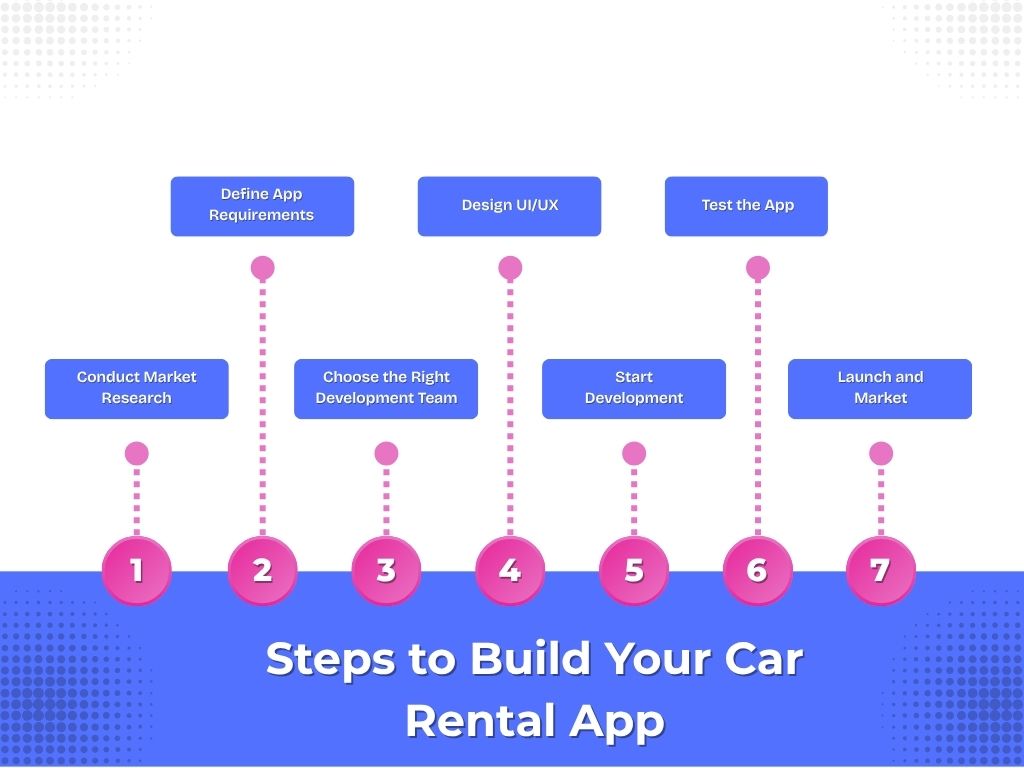Car rental services are shifting from traditional counters to on-demand apps. Turo leads the way by allowing private car owners to rent out their vehicles through a peer-to-peer model. If you’re planning to build an app like Turo, this guide breaks down everything you need to know—from business models to essential features and development steps.
Why Build a Car Rental App Like Turo?
Turo has disrupted the rental industry by connecting car owners directly with renters. A turo clone app follows this same peer-to-peer model, removing the need for owning a fleet and reducing operational costs. Entrepreneurs and startups see this approach as cost-effective and scalable.
Some key benefits:
- Lower upfront investment (no need to buy vehicles)
- High user engagement due to ease of booking
- Strong potential in urban areas and tourist destinations
- Multiple revenue streams (fees, commissions, subscriptions)
Business Model of a Car Rental App Like Turo
Before starting development, choose a business model that fits your goals. Turo follows a peer-to-peer (P2P) model, which involves private car owners listing their vehicles and renters booking them.
Common Revenue Streams
- Commission per booking: Charge a percentage fee from car owners or renters.
- Insurance and protection plans: Offer multiple tiers for liability and damage protection.
- Featured listings: Let car owners pay for better visibility in search results.
- Subscription fees: Provide premium access or early booking options.
- Late fee penalties: Earn revenue through missed return deadlines or cancellations.
Core Features to Include in Your App
To create a successful car rental app like Turo, you need to include essential features that cater to both renters and car owners. These features ensure smooth interactions, build trust, and simplify the booking process for all users.
For Renters
- User Registration: Allow users to sign up with email, phone, or social logins.
- Search and Filters: Let users browse cars by city, date, car type, or price range.
- Car Details Page: Show pricing, features, photos, reviews, and pickup details.
- Booking System: Enable hourly, daily, or weekly bookings.
- Payment Gateway: Integrate with Stripe, PayPal, or other secure options.
- Ratings & Reviews: Build trust by collecting feedback from past renters.
For Car Owners
- Profile Setup: Let owners list vehicles with photos, descriptions, and availability.
- Pricing Tools: Provide dynamic pricing or manual rate settings.
- Booking Management: Accept or decline requests, and manage calendars.
- Earnings Dashboard: Track earnings, payouts, and bookings.
- Vehicle Protection Plans: Offer coverage tiers with clear terms.
Admin Panel
- User Management: Monitor both renters and car owners.
- Booking Oversight: View current and past bookings, disputes, and payments.
- Commission Settings: Set your platform fees and manage promotions.
- Analytics & Reports: Monitor app performance, revenue, and user engagement.
Technology Stack
Choosing the right tech stack helps speed up development and ensures scalability.
| Component | Suggested Technology |
| Frontend (Mobile) | React Native, Flutter |
| Frontend (Web Admin) | React.js, Vue.js |
| Backend | Node.js, Django, Ruby on Rails |
| Database | PostgreSQL, MongoDB |
| Cloud Storage | AWS S3, Google Cloud |
| Payments | Stripe, PayPal, Razorpay |
| Maps & Location | Google Maps API, Mapbox |
| Push Notifications | Firebase, OneSignal |
Steps to Build Your Car Rental App

Building a car rental app requires a clear plan and organized workflow. Following a step-by-step approach helps avoid costly mistakes and ensures timely delivery. Here are the essential stages to guide your development process:
1. Conduct Market Research
Study your competitors, target users, and legal requirements in your region. Focus on rental trends, average pricing, user behavior, and key pain points.
2. Define App Requirements
Decide what features your MVP (Minimum Viable Product) will include. Keep your scope realistic—prioritize features that directly support bookings and trust-building.
3. Choose the Right Development Team
You’ll need mobile developers, backend developers, UI/UX designers, QA testers, and project managers. Hiring an experienced team will save time and prevent costly mistakes.
4. Design UI/UX
Create wireframes and interactive prototypes. Focus on user-friendly booking flows, clear vehicle listings, and smooth navigation. Reduce friction at each stage of booking.
5. Start Development
Break the work into sprints. Begin with frontend development and backend API setup. Build core modules first—registration, car listings, booking, and payment.
6. Test the App
Run rigorous testing for usability, bugs, and performance. Include manual testing and automated test scripts. Address security, especially in payment and data handling.
7. Launch and Market
Release a beta version to a small group of users. Collect feedback and make adjustments. Then, launch the app publicly and start your marketing campaign.
Legal and Compliance Factors
Before going live, make sure your platform aligns with legal requirements in your region.
- Insurance: Partner with providers for vehicle and liability coverage.
- Driver Verification: Use KYC systems to check driving licenses and identities.
- Rental Agreements: Ensure every booking includes digital consent to a rental contract.
- Local Regulations: Check if your city requires business licenses or permits.
How to Stand Out From Competitors
Turo dominates the U.S. market, but there’s room for growth in local or niche markets. You can stand out by offering:
- Lower commission fees
- 24/7 customer service
- Specialized categories (e.g., luxury cars, electric vehicles)
- Regional partnerships with local mechanics or car washes
- Flexible return and pickup options
Growth and Scaling Tips
After launching, focus on acquiring users through digital marketing, SEO, influencer partnerships, and referral programs. Track performance using analytics tools, then adjust pricing, availability, and user experience based on real data.
Once you gain traction, consider:
- Expanding to new cities or countries
- Partnering with insurance firms for custom plans
- Launching a web version or native desktop dashboard
- Introducing tiered loyalty programs for frequent users
Final Thoughts
Building a car rental app like Turo takes planning, the right team, and a clear business model. Focus on solving user problems, reducing friction in bookings, and delivering value to both renters and car owners. With the right strategy, you can launch a strong platform that competes in the growing car-sharing space.

